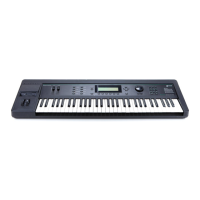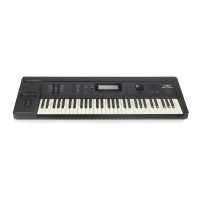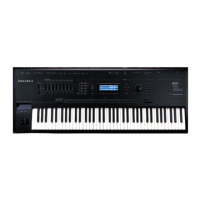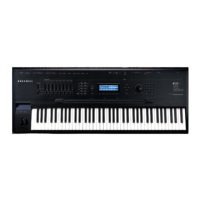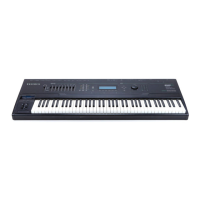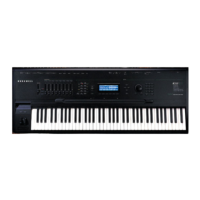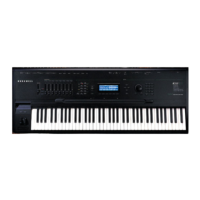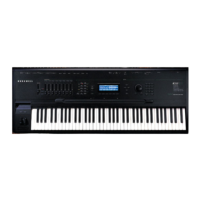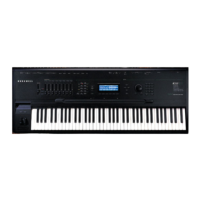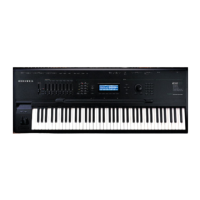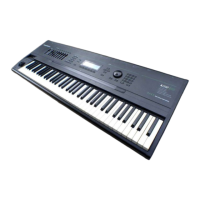4-44
Disk Mode Enhancements in Version 3
Macros
The following chart describes the information stored in a macro entry, and also tells how to the
understand the settings of a displayed macro entry:
Using the Bank and Mode Fields
The bank and mode fields will only be used if a macro file is loaded “as specified.” (This is one
of the options when loading in a .MAC file, as described below) This means that each file listed
in the macro will be loaded in exactly as the fields of the macro entry are specified. These fields
can optionally be overridden in the Load dialog, and a new bank and mode can be chosen for
the entire macro.
It is not always important what the bank and mode are set to in a macro entry, since the macro
can really be loaded anywhere by overriding the bank and mode in the Load dialog. These fields
are more important when you want to automatically configure the banks of your K2000 the
same way each time you load a macro, with different files being explicitly loaded into different
banks.
Disk drive ID
This represents what drive the file is to be loaded from. There are 10 possible values:
The numbers 0-7 represent SCSI 0 through SCSI 7.
The letter F represents the Floppy drive.
The letter U means Unspecified drive. (see below)
The letter L means the Library drive. (see below)
Directory path/file name
This is the directory path and the file name of the file on the disk to be loaded by this
macro entry. This is displayed to the right of the Disk drive ID, following a colon, using as
many characters as needed that will fit in the display (up to 28). The internal macro table
can store any path length, however.
Bank
The bank that the file should be loaded into. This will have a value from 0 through 900 (by
100s), or the letter E for Everything. This field is the first field to the right of the path/file
name in the display.
Mode
The mode specified for loading in the file. The following one-letter codes are shown in the
display:
O means Overwrite mode (Overwrt)
V means Overwrite/Fill mode (OvFill)
M means Merge mode
A means Append mode
F means Fill mode
This field is to the right of the bank field, after a colon.
Object indicator
If a list of objects will be loaded from the file, the macro entry display line will have an “Obj”
indicator as the last field on the right. (see above, for the file \DRUMS\REALKITS.KRZ)
Object list
If the Obj indicator is present for a macro entry, it means a list of individual object types
and IDs are stored in the macro entry for the particular file. When the macro is loaded in,
only these individual objects will be loaded from this file.
Disk Format type
If the disk is a third-party SCSI format disk such as Akai or Roland, a format indicator will
appear on the macro entry display line in the last field on the right. The following codes are
used:
Aka means Akai format
Rol means Roland format
Ensoniq format disks are not currently supported in macros.
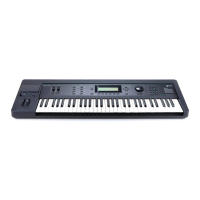
